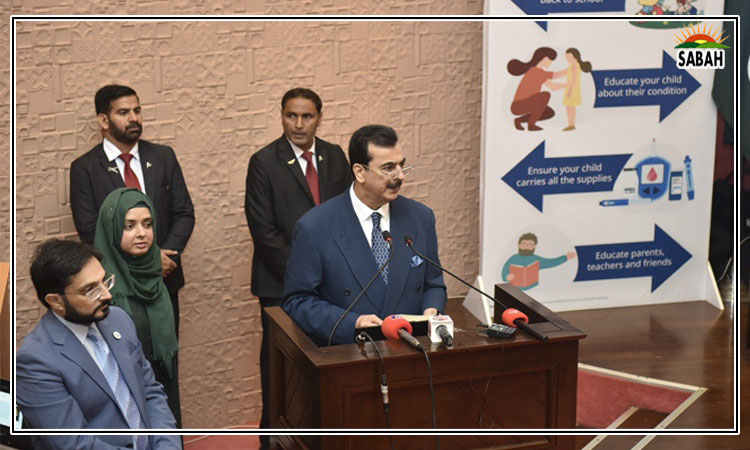Sensing a city’s air quality…Sophia Hasnain
What happens when you sneeze? Your bodys natural response mechanism to the dust triggers in and the dust particles are pushed out of the body. The hair in our nose acts as a filter and rejects the unwanted harmful particles out. Unfortunately, the new types of air pollutants are not being pushed out and enter our body causing not just respiratory illnesses but miscarriages and brain strokes as well.
In the last few years, Lahores worsening air quality has brought attention to air quality monitoring across the country especially amongst the urban population. The air quality monitors from iQAir installed by the citizens started providing data on their website a few years ago and the Pakistan Air Quality Initiative (PAQI) along with citizen activists started highlighting the issue. The data from these monitors became a source of public information and helped build a consensus around the air quality despite the government rejecting the data. However, the units and their data has become a popular source; recently even the chief minister of Punjab quoted a screenshot from their website to indicate an improvement in the air quality.
The first air quality monitor was installed in Los Angeles in 1955 to track air pollution and advise industrial shut down based on that data. Later, USEPA defined the Air Quality Index to harmonize the measurement of air quality across the US; this was followed by efforts in China and Canada to define the indices based on their regulatory environments.
Natural air composition is 72 per cent nitrogen, 21 per cent oxygen, 2.0 per cent carbon dioxide and then the rest of the gases. With the rising use of fossil fuels in the industries as well as in the transportation sector, the air started to get polluted. The index helped create a measurement system taking into account the level of concentration of each of the air pollutant based on the harmful effects of the exposure to that particular pollutant in the air for a considerable period (known as break point) of time starting from an hour to 8-hour and 24-hour period so that the hourly and daily trends could be calculated. The USEPA calculates the air quality index using the break point values and current value. And subsequently assigns a colour-coded category system to create awareness around the air quality.
The harmful effects of the exposure to gases such as carbon monoxide, sulfur dioxide and nitrogen oxides have been known to the scientific community. But then a new pollutant class particulate matter was introduced to indicate the presence of micro-level aerosol and solid particles in the air that can pass through our natural filters. The PM 2.5 and PM 10 particles are 2.5 micrometers and 10 micrometers respectively, about 20 to 5 times smaller than our hair. The PM2.5 particles are residuals of unburnt fuel in the air, mainly caused by the low quality of fuel used in the transportation sector and PM 10 are caused by the dust particles created during the construction activity and road traffic.
As mentioned earlier, natural filters like nasal hair and saliva do not block the passage of these particles. Initially, it was thought that these particles are causing respiratory illnesses but more recent research has linked these particles with strokes, miscarriages and even to everyday experiences such as tiredness.
The air quality issue has become a major urban problem across the world especially in the Global South where fuel quality, industrial waste, garbage burning and construction activities are not strictly regulated. Air quality monitors have played a significant role in creating awareness and mobilizing citizens to ask for action from their governments.
The PM 2.5 and PM 10 monitors are broadly divided into compliance monitors and low-cost sensors. The difference between the two is in the pricing as the name suggests but inherently it is the difference in the technologies to measure the air quality pollutants.
The compliance monitors use Beta Attenuation Monitoring (BAM) technology where the air is let in through a cycling ribbon and passed through a filter. Beta rays are passed through the filter and detected on the other side of the filter. The beta-ray attenuation is exponentially proportional to the mass accumulated on the filter and is then used to determine the concentration of the particulate matter in the air. These instruments are expensive and require regular maintenance and calibrations, and are typically owned by governments and research institutions. This concentration is then fed into the formulae to calculate the air quality index of the area.
The other type of popular air quality monitors is called Low-Cost Sensors (LCS) which are much smaller in size and work on the light scattering principle and are connected to the internet to report data in real time to cloud servers. Air is continuously let in through a small opening and laser light is beamed on the air. The amount of light scattered is then used to calculate the concentration levels of PM 2.5.
The concentration levels measured through LCS are not as accurate as BAM because the LCS do not correct the impact of relative humidity in the air and hence tend to report higher concentrations as the humidity increases in the air. This may change the accuracy of the reading, though multiple data analyses have shown that they do not report false data. This tradeoff between cost and accuracy has led to a huge popularity of low-cost sensors amongst the science enthusiasts, citizens and other interest-based groups, who own and report the data back to the cloud and monitoring sites.
The low-cost sensors have effectively filled a gap since BAM monitors are too few and their results are not representative of the sprawling urban landscape. A typical large city needs at least 20 BAM monitors to accurately measure the air quality, but the cost is prohibitively high. In Pakistan, Lahore has only one deployed on a van owned by the EPA that is mobilized on a weekly basis. None of the other cities has air quality monitors other than the ones deployed by the US Embassy and consulates that regularly publish the data.
The low-cost sensors deployed by citizens and organizations are on the other hand publishing data on a real-time basis. It is estimated that there are about 100 low-cost sensors in Pakistan and of them 50 per cent are active at any given time. The government response to air quality monitors has been irrational as it has outrightly rejected the readings from these monitors, citing them as unreliable. This assertion stems from a lack of understanding of technology and interpretation of data.
Cities like Karachi, Lahore, Islamabad, Peshawar, Quetta, Faisalabad, Hyderabad etc require at least 50 monitors to detect the local air quality insights. One of our monitors, for example, deployed on main M A Jinnah Road in Karachi peaks in the early hours of the day in winter; the unrealistically high air quality index at that location and at that time of the day led us to inquire locally to find out that the cause is bonfire lit by the guards at night. Now that kind of local information is not captured by the lone BAM monitor, yet it is useful information for the neighbourhood to manage the air quality. It is unfathomable that governments are rejecting information they are getting for free at the hyper local level that they would not be able to get through their expensive units.
The low-cost sensors can be used in many ways, one of which is to have a hub-and-spoke network of BAM and low-cost monitors to supplement the BAM data with the hyper-local information. This also helps in creating the impact of other factors such as wind direction. In cities like Karachi where the government does not have any plans for BAM, a network of low-cost monitors can provide granular data that can be augmented with local nuances to build information to create citizen advisories, develop policy measures for combating air quality issues and for better urban planning including transport systems.
It is prudent currently to not get into the debate of 350 vs 250 AQI but rather to tackle the problem because both 250 and 350 are equally dangerous for us, and use data from all the sources to create actionable insights to improve the urban air quality.
Courtesy The News












